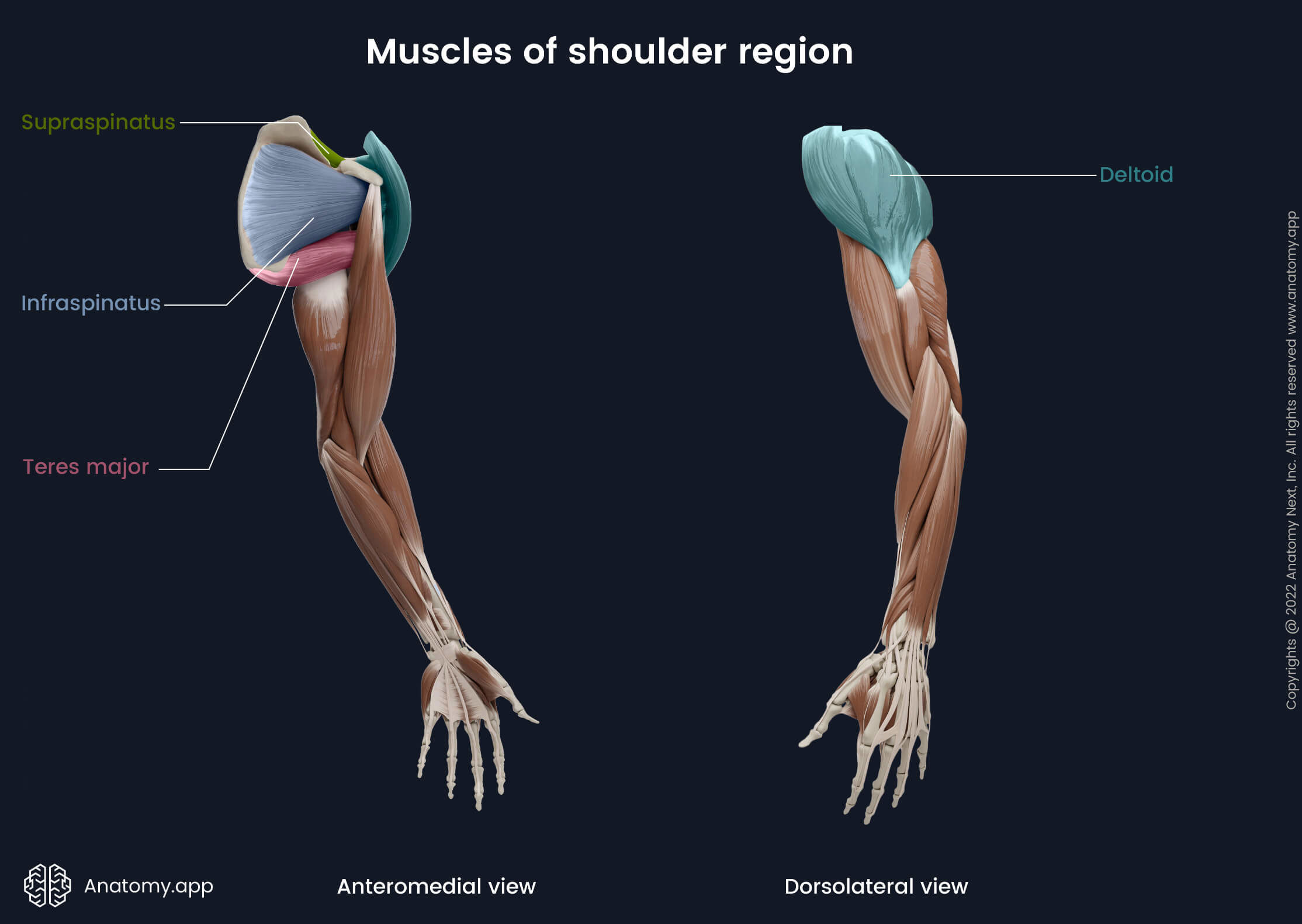- Anatomical terminology
- Skeletal system
- Joints
- Muscles
- Head muscles
- Neck muscles
- Muscles of upper limb
- Muscles of pectoral girdle
- Muscles of shoulder region
- Muscles of upper arm
- Muscles of forearm
- Muscles of hand
- Thoracic muscles
- Muscles of back
- Muscles of lower limb
- Heart
- Blood vessels
- Lymphatic system
- Nervous system
- Respiratory system
- Digestive system
- Urinary system
- Female reproductive system
- Male reproductive system
- Endocrine glands
- Eye
- Ear
Teres major
The teres major (Latin: musculus teres major) is a flat and thick muscle of the upper limb. It stretches between the scapula and humerus. As the teres major muscle provides movements at the shoulder joint, it is classified as the muscle of the shoulder region.
| Teres major | |
| Origin | Inferior angle and lower part of lateral margin of scapula |
| Insertion | Crest of lesser tubercle of humerus |
| Action | Adduction, extension and internal rotation of arm |
| Innervation | Lower subscapular nerve (C5, C6) |
| Blood supply | Thoracodorsal branch of subscapular artery, posterior circumflex humeral artery |

Origin
The teres major muscle originates from the posterior aspect of the inferior angle and lower part of the lateral margin of the scapula.
Insertion
Fibers of the teres major attach to the crest of the lesser tubercle (medial lip of the intertubercular sulcus) of the humerus.
Action
The main functions provided by the teres major muscle include the adduction, extension and internal (medial) rotation of the arm (humerus).
Innervation
The teres major is innervated by the lower (inferior) subscapular nerve that arises from the fifth and sixth cervical (C5, C6) roots of the brachial plexus.
Blood supply
The teres major muscle receives arterial blood supply from the thoracodorsal branch of the subscapular artery and the posterior circumflex humeral artery.